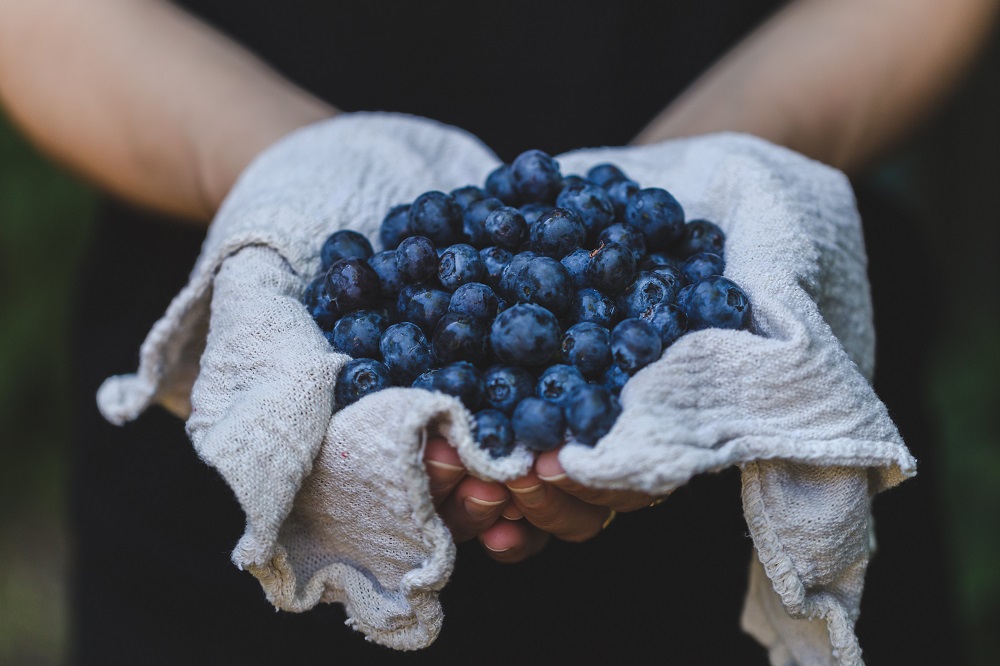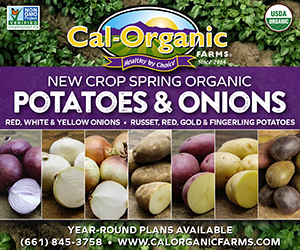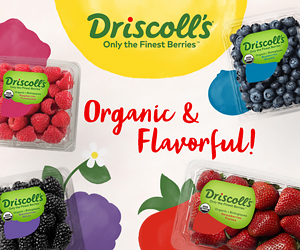On Tuesday of this week, Rabobank, in partnership with ProducePay, held a webinar, “Organic Produce Premiums Under Pressure: North American Organic Produce Update” providing insights on the organic produce market based on a six-page report the company released last week.
Leading the webinar were Roland Fumasi, Ph.D., and David Magaña, Ph.D., both vice presidents, senior analysts and managers for Rabobank’s RaboResearch Food & Agribusiness group.

Roland Fumasi, Ph.D.
The good news is that U.S. organic food sales continued to increase in 2018, reaching $47.9 billion, up from $40 billion the year prior. The bad news is that growth in the space has decreased in both percentage and absolute terms.
“The challenge in the organic produce space is that we’ve increased organic supplies for many of the fresh produce items, such that we’ve been able to satisfy the demand of the hard-core organic purchaser, and the demand those people have is less elastic,” Fumasi said. “Price moves around based on supply disruptions and those organic-only buyers will stick with organic, even when the price jumps a bit.”
Now, with an additional supply because of increased production, more organic is going towards a more traditional market, and they aren’t an organic-only buying segment, so they are much more price sensitive.
“They will buy organic some of the time, but the price has to be right and the quality has to be right,” Fumasi said. “That’s one of those things everyone has to come to terms with. Most consumers in the U.S. are not hard-core organic buyers.

David Magaña, Ph.D
Still, the moderators project that annual organic growth rate will continue at around five percent and should reach $60 billion by 2022.
The talk shifted to explain that while retail organic produce volumes have increased, it’s most likely because of softer prices, especially lower prices on some of the top-selling organic produce items.
While reported shipping-point volumes continued higher for most crops in 2018, annual increases in shipping-point volume have accelerated for many fresh produce items, such as organic apples, strawberries and bell peppers, which achieved annual volume growth of 6, 14 and 145 percent respectively.
Meanwhile annual growth in organic blueberries, cantaloupe and grape tomatoes has moderated in recent years.
Fumasi next touched upon the topic of organic shipping, noting point price premiums are in a decline.

“The challenge shippers face is they sit right in the middle of the retailers and the growers, so while the retailers are continuing to demand more, buy selling produce at lower prices, the shippers want to keep those accounts and keep their retailers happy,” he said. “They need to deliver the type of products that the retailers want. At the same time, the shippers need their growers so they must ensure that the supply going through the value chain is not such that it starts to put too much profit pressure on the growers.”
He noted that due to the increased yield risk and increased labor-intensity of organic produce production, growers and shippers expect to receive a premium price. However, the required premium depends on the specific crop, location and grower. As a rule of thumb, he shared, growers need a minimum of 40 percent premium and without an adequate premium to offset increased cost, producers will find it challenging to justify organic production.
Therefore, the challenge is that while retailers are demanding increased organic volumes, prices are being lowered to move a high volume. This may lead to an oversupply, which will cause immediate and possibly extreme declines in price and decreased organic premiums.
A chart showed that between 2014-2018, organic premiums have decreased for crops such as apples, blueberries and strawberries, while crops such as table grapes, oranges and grape tomatoes have gone in a more positive direction.
Short-Term vs. Long-Term
Even though organic growers may need to be more cautious with some crops, there are plenty of seasonal/weekly opportunities where organic premiums remain significantly high. As an example, he points to blueberries where nine weeks during 2018, they fetched above 90 percent and three weeks they fetched above 100 percent.

“The opportunity to take advantage of these market opportunities will heavily depend on the specific growing region, which influences the ability to target particular market windows,” he says.
Long-term opportunities continue to exist in organic fresh produce, but success will require continued adaptation by growers.
“We think in the medium and long-term, the organic produce market will continue to grow,” Fumasi said. “The organic story tends to check a lot of the boxes consumers are looking for.”
Plus, as more millennial consumers increase their disposable income and start families of their own, it’s expected that the demand for organic produce will continue to grow, if retailers continue to promote it well.
“The Gen Z consumers will add additional fuel to these trends so overall, there is opportunity in the organic space,” Fumasi said. “We need to pace ourselves in certain crops to ensure we don’t overdo the supply in the shorter run but in the medium and longer run, growers need to experiment with more organic production.”






